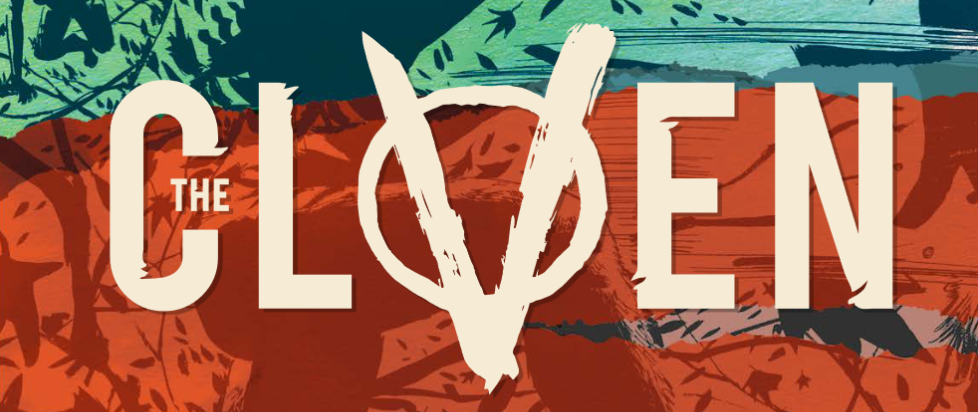
The Cloven Is A Conspiracy Thriller For Everyone Just Wanting To Exist
Garth Stein & Matthew Southworth’s The Cloven (Cloven for short) graphic novels aren’t your typical science gone-wrong fare. The “monsters” created are neither malicious, perfect, nor misunderstood. There’s no grand war at stake. Instead, Cloven is an uncomfortably humbling tale of being just different enough to be ostracized by your fellow humans, even as they seek to benefit from your misery. It’s the tale of a young man, James “Tuck” Tucker, who simply desires acceptance and love, yet rarely receives either for long.
Though the titular Cloven, goat-human hybrids, are an enhanced race with increased stamina, durability, and the ability to eat virtually anything, they’re all still people. People with problems and a fear of embracing themselves for who they are. The Cloven celebrate one another in secret, in “romps” not unlike stealthy pride parades. Treated like an urban legend, whispered but rarely seen, and always hunted by the government organization that seeks to contain them for ruthless, inhumane studies.
Tuck doesn’t want to bring to light the conspiracy. He’s not out to be another Katniss Everdeen – he’s just a lost soul caught between forces far more powerful than he has the time to contemplate. Whether those he trusts from page to page care for him or see the young man as a mere piece on a larger game board, Tuck is constantly scrambling. All this misfortune? Because the daughter of the man who funded it all takes a liking to Tuck, and in turn her father sees Tuck as the prodigal subject – someone worth dissecting to find genetic miracles.

Yet to many, Tuck is just an easy bounty, a vagrant, a loser, and/or a nobody. Even the woman assigned to be his mother, to raise him, is emotionally detached and strict about confining his true nature within the confines of their household walls. Tuck is forever caught between the closet and the truth that most won’t even hear. People who know the reality tend to end up eliminated or so scared they can’t bring themselves to speak out. The Cloven that remain free go so far as to pimp themselves out to the rich at extravagant parties to do tricks or be paid extra for more… lascivious activities. The world Stein writes is full of people without convenient answers. For such fantastical moments as naked men and women with goat legs hopping around city rooftops, every character is grounded in the painful reality many persecuted groups tend to be.
Cloven regularly explores the perspective of the most disadvantaged. The homeless, and their Hoovervilles barred by the concrete facades of modern society. The check-to-check renters with dreams of something better. The rural townies who keep themselves small-minded as a survival instinct. Stein doesn’t try to paint any individual as a messiah – everyone is just people trying to survive. “I have questions, but I don’t have answers” is one of the very first things Tuck tells us, and steadily becomes the driving thread of the story. There are always more questions, and never enough answers. We don’t even learn his name for several pages, because his name is far less important than his journey.
Yet by contrast, Southworth’s expertise from drawing Stumptown is on full display. The use of chaotic paneling – from dutch angles to blurring lines of shadow rather than hard squared panels – carries Tuck’s frantic energy. Yet in somber moments of breathing room, Southworth’s line work is breathtakingly real. It’d be easy with this much shading and the more watercolor-esque colors to have a muddy mess – instead, he captures that same raw humanity as Stein’s script.

It’s just the right level of abstraction, embodying people you could easily see walking by on the street. Nothing compares to the sheer sadness Southworth captures in Tuck’s expressions though. Whether close-ups on his eyes or wide shots capturing his full body in motion, you instantly understand what Tuck is feeling in every moment, with some whole pages barely featuring an ounce of text. This is a cohesive creative vision the likes of which most could only dream of.
The only aspect that may truly prove divisive for some is its remarkably unconventional approach to communicating a message of empathy and understanding. Through notes of religion and secular perspectives in equal measure, Stein and Southworth’s thesis is made manifest in a single sentence. “YOU HAVE TO HOLD THE BABY,” the only moral man in a room of cold, calculating doctors should. The regret he carries from successfully birthing the Cloven, and his many efforts to help them, might be for naught in the grander scheme of things. Yet he tries anyway, both due to his guilt and natural compassion. “I give them love,” he says, “and that inspires them to live…”
In a world that can feel so cruel and despairing, reminding one another how powerful the act of compassion, of love, can truly be, is a beautiful thing.
———
The Cloven Volumes 1 & 2 are available in paperback and hardcover from Fantagraphics. Digital volumes were provided for review purposes by the publisher.
———
With over ten of writing years in the industry, Elijah’s your guy for all things strange, obscure, and spooky in gaming. When not writing articles here or elsewhere, he’s tinkering away at indie games and fiction of his own.



